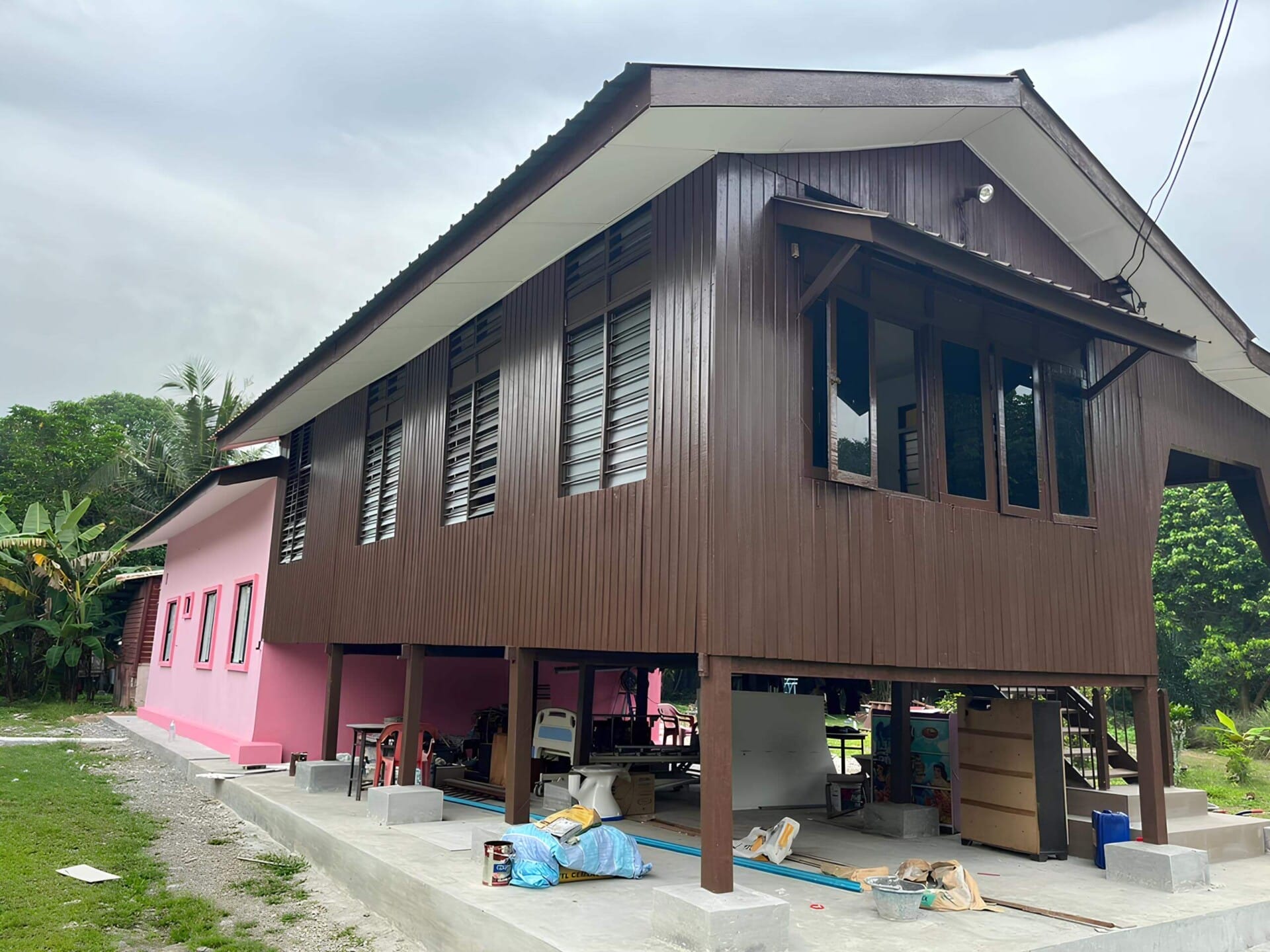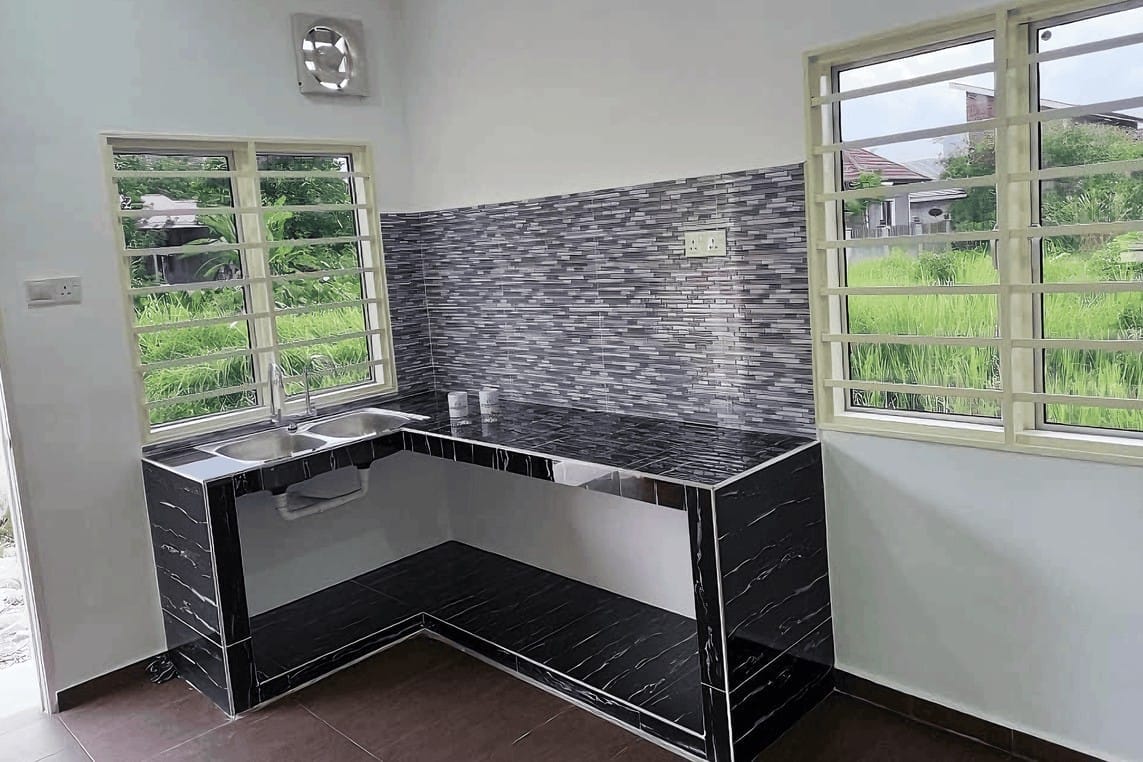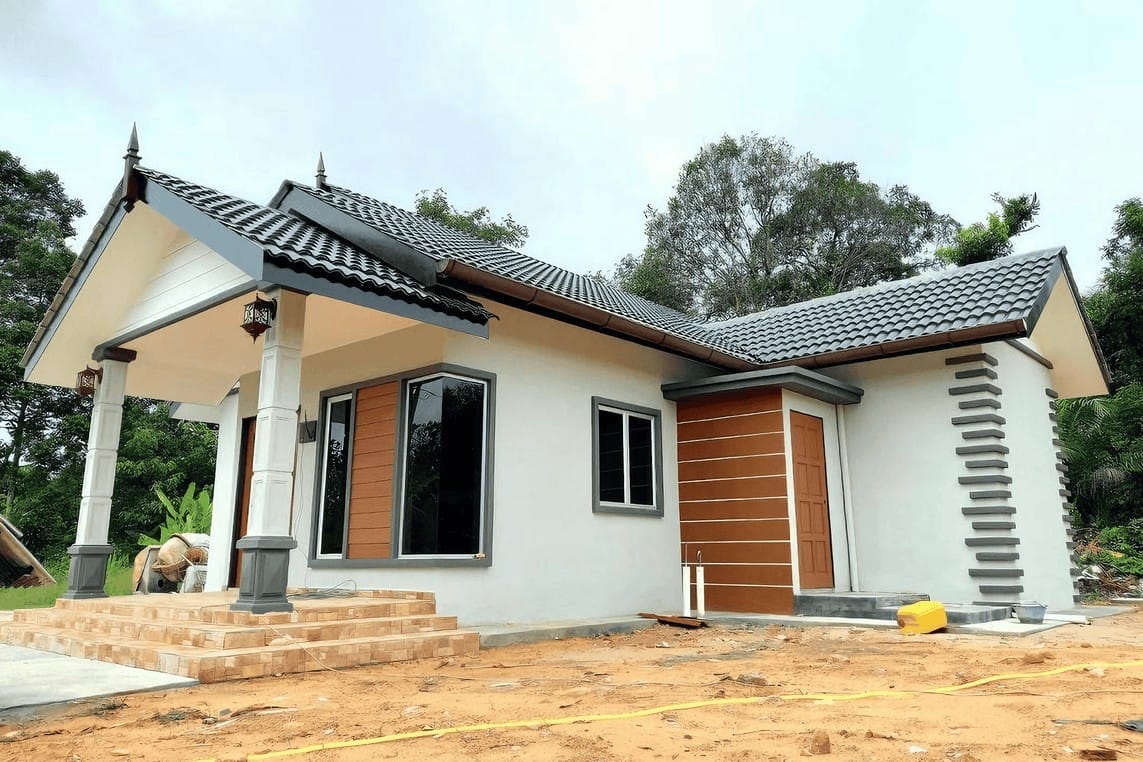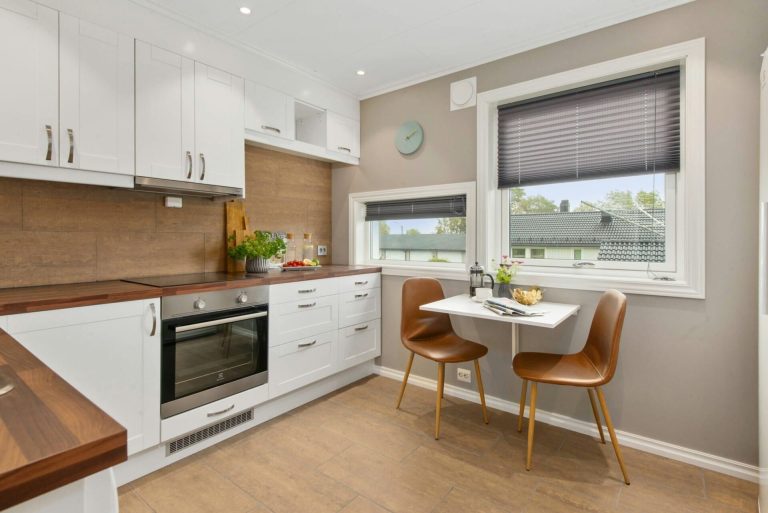Building your dream home can be one of the most exciting journeys you’ll ever embark on—just picture it: the perfect layout, that cozy spot by the window, and the yard where your kids can play. But before you break out the paintbrushes and start picking out furniture, there’s a crucial step you need to tackle: financing. Let’s be real, the last thing you want is to stumble over financial hiccups that could derail your plans. In Malaysia’s ever-changing property market, getting your financing just right is key to a smooth construction process. So, to help you dodge the pitfalls, we’re diving into the top 5 mistakes people make when it comes to home construction financing. Stay tuned, and let’s make sure your road to homeownership is as hassle-free as possible! 🏡✨
Understanding the Home Construction Financing Landscape
When diving into the world of home construction financing, it’s crucial to grasp the different types of financing options available to you. From conventional loans to government-backed programs, each has its pros and cons. Understanding these nuances can help you make informed choices and avoid pitfalls. Conventional loans might offer lower interest rates but can require a hefty down payment, whereas government loans might be more accessible but come with specific eligibility criteria.
Another key aspect is the pre-approval process. This isn’t just a formality; it gives you a clear picture of your budget and can save you a ton of headaches down the line. Being pre-approved helps you avoid the disappointment of falling in love with a home that’s out of your financial reach. Additionally, it shows sellers that you are a serious buyer, which can give you an edge in competitive markets. Make sure to gather all necessary documentation to streamline this process:
- Proof of income
- Credit history
- Employment verification
Lastly, always keep an eye on your budget and build in a cushion for unexpected expenses. Construction can come with surprises, and a good financing plan should account for these without leaving you strapped for cash. Consider utilizing a construction loan that converts to a permanent mortgage once the home is built. Here’s a quick comparison to ponder:
| Type of Loan | Pros | Cons |
|---|---|---|
| Conventional Loan | Lower rates, flexible terms | Strict qualification criteria |
| Government-backed Loan | Lower down payment, easier approval | Possible additional fees |
| Construction Loan | Financing during the build | Higher interest rates |

Identifying Common Pitfalls in Financing Your Dream Home
When diving into the world of home construction financing, many first-timers overlook some common pitfalls that can turn their dream abode into a financial nightmare. One major mistake is underestimating the total costs. It’s easy to get swept up in the excitement of selecting finishes and upgrades, but without a comprehensive budget that includes everything from permits to landscaping, homeowners can find themselves financially stretched. Always factor in a contingency fund for those pesky unexpected expenses that crop up during construction.
Another frequent issue arises from ignoring the importance of research. Not all lenders offer the same terms, interest rates, and fees. It’s essential to compare multiple financing options before settling on one. Remember, just because a lender seems credible, it doesn’t mean their offer is the best out there. Take the time to read reviews and ask for recommendations from friends or family who have gone through a similar process. It’s also beneficial to understand the different types of loans available to you, from traditional mortgages to government-backed loans.
| Common Financing Pitfalls | Consequences |
|---|---|
| Underestimating Costs | Financial strain during construction |
| Neglecting Research | Missed better loan opportunities |
| Skipping Pre-Approval | Limited negotiating power |
| Not Consulting Professionals | Potential legal issues with contracts |
| Ignoring Budget Adjustments | Inability to complete the project |
don’t forget to engage with professionals who specialize in home financing. Whether it’s a mortgage broker or a financial advisor, their expertise can illuminate options you may not be aware of. They often have insights on current market trends and may help you secure a better rate. Investing a little time and effort into understanding the realm of home financing can save you a lot of heartache—and money—in the long run. So, roll up your sleeves and get informed!

The Importance of a Solid Budget and Financial Plan
When diving into home construction, having a solid budget and financial plan in place can be the difference between a dream home and a financial nightmare. It’s all about mapping out the journey, ensuring that you don’t detour into unexpected expenses that can quickly spiral out of control. With a clear financial plan, you’ll know exactly where your money is going at every phase of the project, giving you the confidence to make informed decisions.
To create a smart financial strategy, consider including the following essentials:
- Construction Costs: Account for materials, labor, and any unexpected fees.
- Contingency Fund: Set aside 10-20% of your total budget to handle surprises.
- Timeline Estimates: Align your budget with the construction timeline to avoid overextending your finances.
- Regular Reviews: Schedule frequent check-ins on your budget versus actual spending to stay on track.
Another crucial aspect is to understand the sources of financing available to you. Be it a bank loan, personal savings, or a government grant, knowing your options will help you select the best route. Here’s a quick overview of common financing sources:
| Financing Option | Pros | Cons |
|---|---|---|
| Bank Loan | Lower interest rates | Strict eligibility criteria |
| Personal Savings | No interest payments | Limits on available funds |
| Government Grants | No repayment required | Limited availability |
Incorporating these elements will not only help you avoid missteps but will also empower you to hold your construction team accountable throughout the process. An adaptable budget allows for adjustments when unforeseen costs arise, ensuring that you don’t jeopardize your financial well-being. So gear up, plan smart, and get ready to create the home of your dreams without breaking the bank!

Choosing the Right Lender for Your Home Construction Project
When it comes to financing your home construction project, choosing the right lender is crucial. You want a partner who’s not just about approving your loan but understands the unique landscape of construction financing in Malaysia. Start by comparing various lenders to find one that aligns with your financial situation and construction timeline. Look out for key factors like interest rates, loan terms, and most importantly, their experience in handling construction loans.
Check if the lender has specific loan products tailored for construction projects. Some lenders specialize in offering construction-to-permanent loans, which can simplify the financing process by turning your construction loan into a permanent mortgage after the project is done. Additionally, don’t hesitate to ask about their appraisal processes and how they schedule disbursements. A lender who understands the phases of construction can help you avoid unnecessary delays and financial strain.
think about customer service. A friendly and responsive lender can make your experience much smoother. Look for lenders who are willing to answer all your questions and provide guidance throughout the financing process. You might even want to meet with some lenders in person for a feel of their service. After all, you’ll be working closely with them during a significant investment in your future!

Navigating the Fine Print: Loan Terms and Conditions Explained
When diving into home construction financing, decoding the loan terms and conditions can feel like translating a foreign language. Familiarizing yourself with common terms is essential to avoid making decisions that could leave you financially vulnerable. Key elements like interest rates, repayment schedules, and penalties for missed payments can greatly influence your overall loan experience. For instance, an adjustable interest rate may seem tempting but can spiral out of control if you’re not prepared for possible increases down the line.
Understanding the specific conditions tied to your loan is equally crucial. Look out for clauses that might seem minor but could have significant implications later. For example, some loans come with a prepayment penalty, meaning if you decide to pay off your loan early, you could be hit with additional fees. To prevent surprises, always clarify with your lender what the implications of early repayment may be or if there are any hidden costs associated with your loan, such as administrative fees or insurance requirements.
Lastly, don’t underestimate the importance of reading through the fine print with a discerning eye. It’s beneficial to create a simple comparison table outlining the different loans you’re considering. This will help you visualize aspects like total costs, any mandatory insurance, and the level of flexibility each loan offers. Here’s an example of what that could look like:
| Loan Type | Interest Rate | Prepayment Penalty | Flexibility |
|---|---|---|---|
| Fixed Rate | 3.5% | No | Low |
| Variable Rate | 2.8% (adjustable) | Yes | Medium |
| Construction Loan | 4.0% | No | High |
By carefully reviewing these aspects and asking questions when uncertain, you’ll navigate your loan’s fine print more confidently. This due diligence can save you from costly mistakes and lead you to a more gratifying home financing journey.

Establishing a Realistic Timeline to Prevent Cost Overruns
Creating a timeline for your home construction project can be just as crucial as budgeting. A realistic timeline helps everyone involved understand what to expect and when, which can significantly reduce the chances of unnecessary costs piling up. Start by breaking down your project into key phases, such as design, permitting, construction, and finishing. This way, you can identify how long each segment should realistically take and plan your finances accordingly.
Don’t forget to factor in some buffer time for unexpected delays, which are common in construction. Here are a few things that might eat up your precious time:
- Weather conditions: Rain or extreme heat can halt work progress.
- Supplier delays: Materials may not arrive as scheduled, throwing off your timeline.
- Permitting issues: Local authorities can sometimes take longer than expected to approve plans.
To make sure your timeline holds up, consider using a simple timeline table to visualize your project milestones. Here’s a quick look at how you might structure it:
| Phase | Start Date | End Date |
|---|---|---|
| Design | 1st Jan | 15th Jan |
| Permitting | 16th Jan | 30th Jan |
| Construction | 1st Feb | 30th Apr |
| Finishing | 1st May | 15th May |
The Role of Pre-Approval in Securing Construction Financing
When it comes to securing construction financing, getting pre-approval can be a game-changer. This upfront endorsement from a lender not only helps streamline the process but also gives you a clear idea of how much you can borrow, making it easier to set a realistic budget for your project. Without it, you risk running into unexpected hiccups that could delay your dream home.
Here are some key benefits of obtaining a pre-approval:
- Confidence in Budgeting: You’ll know your financial limits, allowing you to focus on properties and plans that fit your budget without falling in love with something you can’t afford.
- Stronger Position in Negotiations: Sellers and builders take you seriously when they see you have financing lined up, making you a more attractive buyer in a competitive market.
- Smoother Process: Pre-approval often means faster closing times since some paperwork will already be out of the way.
Let’s not overlook the importance of keeping your financial situation stable while you navigate through the pre-approval process. Any changes like acquiring new debt or shifting jobs could impact your eligibility. Here’s a simple table to visualize what you should avoid during this crucial time:
| Actions to Avoid | Consequences |
|---|---|
| Taking New Loans | Increased debt-to-income ratio |
| Changing Jobs | Potential instability in income verification |
| Making Large Purchases | Draining your cash reserves |
Strategies for Effective Communication with Contractors and Lenders
Effective communication with your contractors and lenders is key to a smooth home construction journey. It’s not just about sending messages; it’s about fostering a healthy relationship. Start by setting regular check-ins, whether weekly or bi-weekly, even if it’s just a quick chat over the phone or a simple email update. This ensures everyone is on the same page and can address concerns before they snowball. Remember to listen actively to their feedback - it could save you from costly mistakes down the line.
Being clear and specific in your requests can make a world of difference. Instead of vague instructions, lay out what you need in simple terms. Use tools like visual aids or sketches to help convey your vision better. Consider creating a brief project overview document that includes essential timelines, deliverables, and any specific preferences. This not only organizes your thoughts but sets the expectation for your contractors, helping them understand your priorities more clearly.
Documenting everything is an underrated strategy. Create a shared online folder where all project details, contracts, and finances live. This transparency encourages accountability and can head off misunderstandings. If issues arise, refer back to these documents to keep discussions constructive. Additionally, here’s a quick table to outline the ideal communication mediums for various situations:
| Situation | Preferred Medium | Purpose |
|---|---|---|
| Project Check-in | Video Call | Discussion of progress |
| Budget Review | Detailed breakdowns | |
| Quick Queries | Text Message | Immediate responses |
The Way Forward
And there you have it! 🎉 Avoiding those top 5 home construction financing mistakes is a game-changer for your project. From understanding your budget to keeping an eye on hidden costs, being informed and prepared can save you a ton of headaches (and cash!). So, whether you’re building your dream home or just getting started on your journey, make sure to keep these tips close at hand. Remember, a well-financed construction project can lead to a beautiful home, built just the way you imagined. Happy building, Malaysia! 🏠✨ If you’ve got any other tips or stories about home financing, we’d love to hear them in the comments below!







